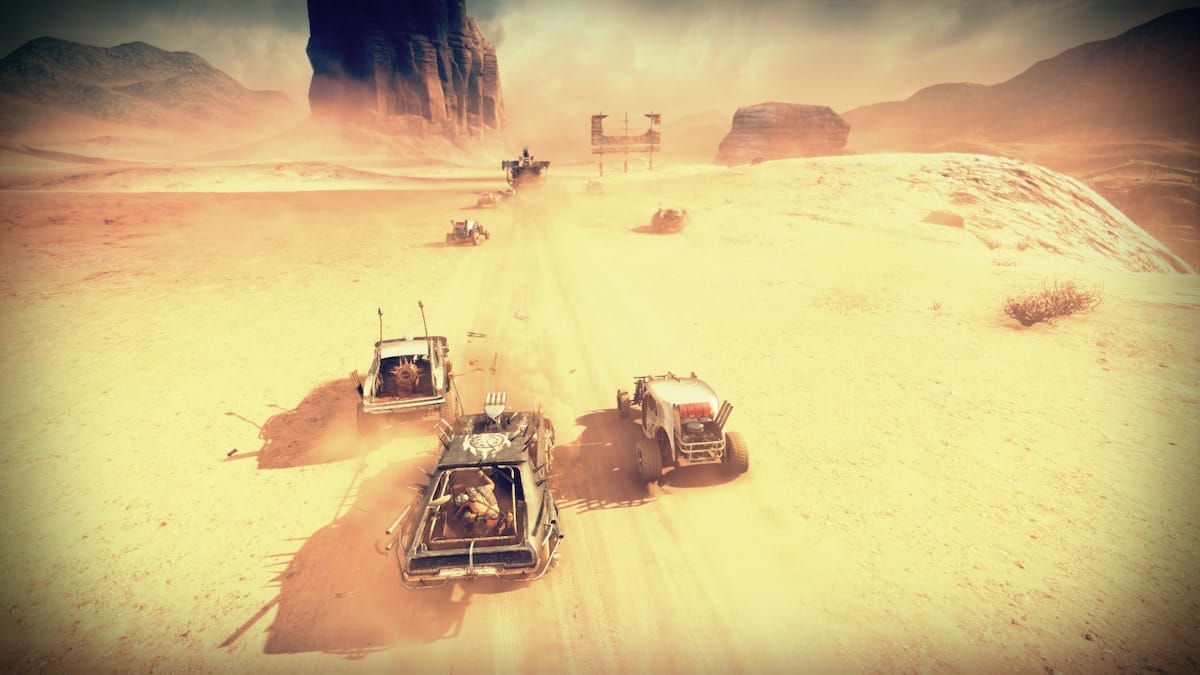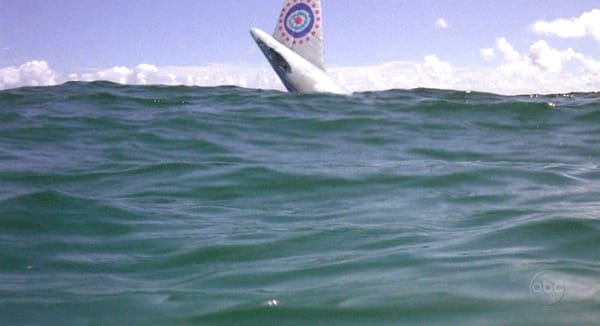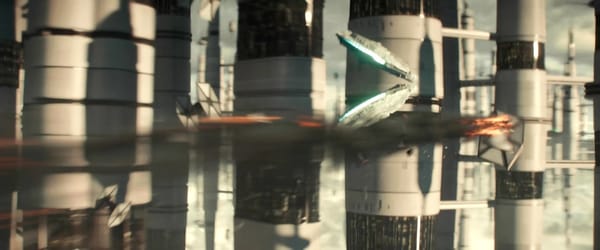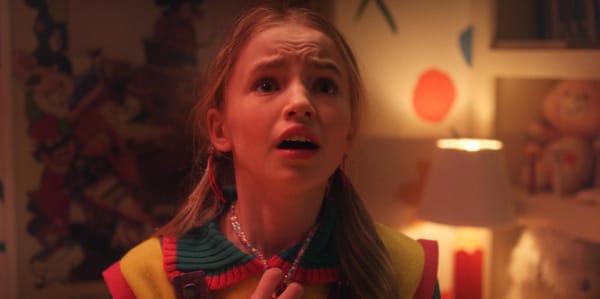Mad Max (2015)
I finally found Glory

When I wrote my book, The Cinema of Survival: Mad Max Fury Road, I spent a substantial portion of the first chapter trying to untangle the continuity of Mad Max and its three sequels, which drops the audience (by the time they reach Fury Road) into a world that seems to have been a wasteland for generations, and into the eyes of a Max who (among other things) seems to have forgotten that his son was a boy.
In one sense, I resist this kind of nitpicking. The movie is the movie, and I prefer it be the movie first. The text is the text. The text’s requirements as a sequel to another movie, or a lead-in to a forthcoming movie, or a sequel to a prequel that hasn’t been made yet, shouldn’t tally on the list of things that are credibly assessed when discussing whether or not the movie “works.”
Mad Max: Fury Road — as of this writing, still one of the five best films of its century — obviously works. It’s also a leading example of the movie being the movie: it constructs, inhabits, and fully refuses to apologize for, its story world. Last week I mused about form meeting function; in Fury Road form and function meet perfectly — arguably, to a greater degree than nearly any other film ever made.
I did wonder about Glory the Child, though.
Glory is the semi-spectral little girl who appears to Max in precise motivating flashes throughout Fury Road. (She is accompanied on occasion by other characters, including an army officer and an elderly Aboriginal Australian.) Her frequent vocal questioning — “Where are you, Max?” — gave my book’s first chapter its title.
In that chapter, I assessed the continuity of the Mad Max franchise, largely to circle the core struts of the main character’s backstory which are, in any presentation of the character, inviolable. One of them is that, in whatever version of the story you’re in, Mad Max is the traumatized father of a dead child.
(In case you think I’m making too much of the Glory/Sprog confusion, it’s worth recalling that in Fury Road, the ghost of Glory calls Max “Pa,” just like his son Sprog did. Who is this kid??)
Back to form meeting function. Because Fury Road is (nearly entirely) a chase, there’s little purpose or opportunity for elaboration upon the motivations and obstacles of the hero characters. We don’t need to know why Furiosa is shepherding the Wives across the Wasteland to the Green Place; we can deduce a reasoning from first principles. (Being enslaved is bad.)
Similarly, we can deduce Max’s reasoning (or what passes for it), based on behaviour: he doesn’t want to be around other people, and Glory’s mental chatter gives us enough of a framework (he didn’t save her / them / someone, from something devastating) to both understand his reluctance, and explain his mid-adventure trauma flashbacks. Is it interesting that we see Glory run down by a truck in Max’s flashbacks, identically to how Sprog died in the original Mad Max film? Yes it is. Are the differences a point of contention for the story purposes of Fury Road, as a film, as we watch it? No, not really.
Whether Sprog and Glory are the same person only matters, after all, if you’ve seen the original Mad Max film; Fury Road is the refreshing sequel that genuinely doesn’t care if you’ve ever seen a Mad Max film before, at all. Fury Road gives you every single story parcel needed, to understand the film that you’re watching.
Of course, ten years later, we know a lot more about Fury Road than we knew going in. We know, for example (and Kyle Buchanan’s book is essential reading on this adventure, if you didn’t know that already), that Fury Road nearly got made twice before it finally got made; it was the work of over a decade to get the production to a green light, a start date, and actual filming. We know that during that time, George Miller and Nick Lathouris elaborated upon their story endlessly, eventually ending up not with just Fury Road‘s shot-for-shot storyboard (in lieu of a script), but with two full “scripts” (though I suspect they were more like prose outlines) for prequel projects that detailed the two lead characters’ backstories, to help the actors playing them. One was for Furiosa (called Furiosa, natch), and the other was for Mad Max (The Wasteland).
And although Miller has been circumspect on this subject — at least since Furiosa: A Mad Max Saga became an actual film — we know that both of those backstories were roughed out to various ancillary media creators, as starting places for what became tie-in comic books and video games. Elements of both Furiosa and The Wasteland turned up in secondary media in 2015, and have been quietly swept out of canon since, in case Miller ever gets to follow up on the Furiosa film he ended up making, and finally make The Wasteland as well.
But if he never does — and, at this point, I suspect he will not — I think we still have a pretty good idea of what The Wasteland would have looked like anyway, at least in story terms: it would have looked like Avalanche Studios’ 2015 game, Mad Max.
We know this because, among other things, the game details the entire backstory of Max’s relationship with Glory the Child. As such, the game feels surprisingly integral to the Mad Max canon as a whole — too poorly-made to match Alien: Isolation, perhaps, but of its ilk nonetheless. It sketches the emotional continuity for Max’s experience prior to the opening of Fury Road in a surprisingly direct way, and leaves the character as much in need of redemption as he’s ever been in his story so far.

“Are you away on one of your long journeys inside your mind? Are you okay to drive?”
I am not a games journalist. I want to be very clear on that point before I do this next part, because I’m going to do it bluntly, and with little awareness of even the proper words that are used to describe things in a proper game review. But it must be said:
Mad Max, in terms of gameplay, is far and away the worst video game I’ve ever played for any length of time. That I finished it at all (and reader, it took me several runs at the wall before I got over the lip) is a credit to how much I love this world; and, secondarily, what parts of the experience the game gets right, on which more in a moment.
But first, let’s rattle off a few of the key ways this game fails and frustrates its players; suicidally so, given the weak sales numbers (and eventual brush-off from an unimpressed George Miller):
1/ The actual control mechanics are stunningly clumsy, at least in any portion of the game where Max is on foot, which is a staggering 60% or more of the time. This clumsiness is largely down to the fact that the game designers opted to have the X button do nearly everything. I didn’t count, but I’d guess X triggers any of two or three dozen potential actions from Max, and the game decides which action X is meant to trigger at any given moment. This decision is based on the position of the player character, which (exacerbating the problem) is both laggy, and broadly targeted. I really hold it as a point of pride that I finished Mad Max at all, because there are points in this game where achieving the objective is effectively impossible, given the lack of finesse and the inability of the controller to respond accurately to the player’s commands. Ususally, in these moments, I got past challenges through sheer dumb button-mashy luck, which robs the player of any feeling of agency over the objectives.
2/ Thank goodness (and as mentioned in most reviews of the game) the driving experience of the game is actually pretty epic. So before I give that element of Mad Max its flowers, allow me to circle the baffling error in design judgment that I mentioned above: why, in a game based on the Mad Max franchise, is more than 60% of the gameplay conducted not in a car??
3/ The repetitiveness of basic mission elements begins to really show itself over time. You get into a lot of fistfights in this game; like, maybe 10,000. Of those 10,000, about 9,978 of them are exactly the same. You also search a lot of environments for “scrap” in this game. You defuse a lot of landmines, with the aid of a dog, in this game. None of these routines advance the story, or become more complex, or get more interesting as you level up. It’s all just drudge-work, repeated endlessly, at every tier of the adventure. (To be fair, you could play the straight-and-narrow version of the game where you just undertake the story missions and wasteland missions and skip nearly all of the rest except the repetitive fistfighting; but there are other downsides to doing that.)
4/ There is a random mechanic in Mad Max where an apocalyptic storm blows in every now and again and you just have to… wait it out. These storms last anywhere from 2 minutes to 15 minutes — and not game-time minutes, mind you, real minutes. During the storms, you can’t do anything. You can’t prevent them from showing up; you have no idea how long they’ll last; and you can’t do anything while they’re happening. If you’re outside, they’ll kill you or blow up your car; if you’re within a rudimentary shelter, you just stand there… and wait. It’s basically a hard-coded “hey stop playing and go do the dishes” mechanic, and if it only happened once or twice in the whole story, I’d probably find it funny. But it happens dozens upon dozens of times instead, and rarely at a convenient moment. One time, it happened to me during a multi-combatant boss fight. C’monnnnn.
5/ Chumbucket, Max’s sidekick NPC throughout the game, sucks.
It’s actually kind of hilarious that Avalanche Studios seems to have fully forgotten that the Mad Max franchise takes place in Australia, and had to reel in their error by re-voicing Max at the last minute (who, previously, had an American accent, like everyone else in the game). Chumbucket is one such Yank, a gibbering savant mechanic who prays to the “Angel of Combustion,” who he claims saved his life when he was chucked off the walls of Gastown for being, uh, too weird. (Too weird for Gastown — take the note, Chum.) But no, Chumbucket just keeps gibbering, and like so much of the rest of Mad Max, repetitively so. And Chum goes with the player everywhere, riding shotgun (literally!) in the back of the car, commenting on literally every single thing that happens. One cannot leave a fortress without Chum repeating the exact same scripted line about earning the favour of the gods by undertaking a Death Run; one cannot obliterate an enemy vehicle without Chum whinging about leaving good scrap behind; and of course, one simply cannot be about one’s business without Chum eventually heralding the arrival of one of the random storms (which, in an odd twist that only worsens the sense that storms happen constantly, he’s wrong about, 75% of the time).
Minor spoiler for the end of Mad Max: you do eventually get to kill Chumbucket (or to be more accurate, do nothing to stop him from killing himself). But holy lord, that moment is too long arriving, and (like a lot of things in this game) not satisfying enough when it does.

“Perhaps it’s not the killing you enjoy… but the moments of silence that the fighting brings you.”
In Mad Max, Mad Max wants to drive across the Plains of Silence in his Interceptor. (I now look differently at the opening shot of Fury Road.) Given everything I’ve mentioned above, it’s hard to blame Max for wanting to get away from it all: the Wasteland is hell, and Max doesn’t want to live in it anymore.
This, then, is one of the things the game does well. The world it presents is, to my eyes, generally outstanding — to the point where I might even be generous and add that some of the frustrations with the gameplay enhance the game’s intended treatment of the sheer awfulness of post-apocalyptic life.
When contemplating the continuity of the Mad Max universe this time around, one thing couldn’t help but surface in my mind: once you’re in whatever passes for the end times — which we currently certainly fucking are — it sure does feel like you’ve been in them a lot longer than you actually have. So, like, maybe Fury Road takes place only three years after the original Mad Max; maybe the world didn’t actually rot away and become something that looks generationally post-apocalyptic in such a short span of time; maybe what we’re seeing is only the way Max feels. But I digress. Every god damn thing is a struggle when every god damn thing is simultaneously going to shit, and Mad Max, the game, captures this uncannily — throw-your-controller-through-the-television-screen uncannily at times, perhaps, but uncannily nonetheless.
This is particularly evident early in the game; and early in any new level of the game, as well. The Wasteland in Mad Max is divided roughly into a map of five sections; in each section, there is a warlord, friendly to Max, who wants better control over their territory but (in spite of having, as far as I can tell, dozens of henchpeople lying around their fortresses) has no muscle with which to do so. A lot of the gameplay in Mad Max, then, is Max going on mini-missions to tame these sections of the Wasteland, bringing down their “threat level” by overthrowing enemy strongholds, destroying enemy idols, and basically beating the shit out of everyone that moves.
And early in the game — and early in any new level of the game — this process is awful.
When you get started in any broad category of “tame the Wasteland” activities, so many things happen to you at once that you can’t even accomplish whatever modest goals you set for yourself. You say to yourself: hey, I’ll go pull down that scarecrow half a mile from here. You leave the fortress in your car. You’re out on the road not fifteen seconds before you’re attacked by three enemy vehicles loaded with War Boys; you stop what you’re doing and fight them, or drive as fast as you can and get away from them, and by the time it’s all done, you’re nowhere near the scarecrow you meant to topple, and you’re out of water (which restores health) so you need to find some of that, and before you can some other god damn thing (likely a storm) is happening, and by the time you deal with that, a sniper is shooting at you, or you’ve stepped on a landmine, or you’re dead and you’ve gone back to the beginning.
Look, one one level, this is just shitty design. Pedagogically, Mad Max sucks: it does an extremely poor job of teaching the player how to play the game; less so in terms of button commands, more so in terms of how to actually structure one’s play. And because every single activity — even, as I said, right at the beginning! — is relentlessly interrupted by any of twelve random immediate problems, you can spin your (metaphorical) tires for months before you figure out how to properly undertake the long-term process of clearing the Wasteland. I know I did.
This is, obviously, frustrating as hell; it’s also not far from an actual point. Life in Mad Max feels desperate, in a way that other video games are hard-pressed to match. You are fighting really, really hard for every inch of progress. Obviously, as you level up as a player, you get better at this; once I worked out a broad strategy for progression, living in the Wasteland became less frustrating, more repetitive, and more like just… uh… being alive.
I don’t know if Mad Max is trying to make a larger political point about the excruciating ease with which we are all drawn off-mission by any of a dozen end-times clusterfucks that are visited upon us every day of our lives, but even if they arrived at it accidentally, I felt it.
More kudos: as I said, the driving mechanics in the game are mostly superb. The parts of this game where you’re Mad Max, Mad Maxxin’, rule. In each territory, there’s a tanker heist you must undertake, decimating a convoy to bring down its lead vehicle so that you can win (wait for it:) a hood ornament. Stupid objective, but fuck those missions are fun, and they only get more fun, the further into the Wasteland you go. Car combat is one of the few parts of Mad Max where genuine progression and skill improvement seems to happen organically (all while you are piece-by-piece upgrading your car, the Magnum Opus). And better yet, it feels like Mad Max — the movies, not the game. Car combat is the one reliable spot where Mad Max (the game) hits the hot gooey centre of Mad Max (the franchise) and burrows in like a tick.
I mentioend the Magnum Opus: that’s right, the Interceptor is gone. In what feels to me like a fairly classic (read: George Miller) story prompt, Mad Max’s inciting incident is the loss of Max’s car, and the entire adventure (with the usual heavy asterisk, just like the movies) is about getting the car back. You don’t get to drive the Interceptor till very near the end of the game; hell, the Magnum Opus doesn’t get a V8 engine till very near the end of the game. Both moments are orgasmic, when they arrive.
And pay attention to the design of the world: it’s outstanding. The designers had the brainwave to imagine the Wasteland as being half below an old sea wall; the southern half of the map is a dried seabed, with ships (and airplanes) permanently stranded in the sands from the days before the world fell. Halfway through the game, you punch through the big iron skull gate that guards the sea wall, and you’re into American southwest desert where all hell has firmly broken loose. At the very top of the map is Gastown — the same Gastown from Furiosa, albeit designed somewhat differently — which is where your car is; where the Big Bad is; where the most infuriatingly awesome Death Race 2000 you could possibly imagine is.
And it’s where Hope and Glory are.

“Kill them all. I want you to paint my name in blood across the lands…”
I mentioned “the usual heavy asterisk, just like the movies,” with regards to the story of Mad Max being largely about Max’s efforts to recover his car. That’s true: but, just like in the movies, this broken, closed-off road warrior gets pulled into a web of human relationships which end up motivating (or, from his point of view, complicating) his ultimate intentions.
Unlike in the movies, in Mad Max (the game), this doesn’t go well for him at all.
So, she’s here. Glory the Child. Her mother Hope, too; this is, among other things, why I’m pretty sure we’re reading at least the outline draft of The Wasteland when we’re playing through the story mode of Mad Max. Hope, Glory, Scrotus, Stank Gum, Deep Friah, even fucking Chumbucket… they feel like George Miller characters, arranged in a George Miller world.
Now, to be clear, “story mode” characters aren’t in Mad Max much. 90% of the game is as described above — one third driving, two thirds punchy-wunch, all endless repetitions of core mission types and conceits until you hit actual character-driven side-quests, or eventually, character-centric portions of the main quest.
Almost all of the latter happens when you reach the fifth and final territory of the game, which is Gastown itself, here envisoned as being built atop a massive (and fiercely protected) junkyard, but otherwise pretty similar to how we find it in Furiosa. (Dementus, referred to as Dr. Dementus here, is not seen in person.) We’ve met Hope & Glory once before, in a cage in one of the other warlords’ fortresses; Hope gave us a side-quest then, and promptly disappeared. Now we meet her again — once again in a cage — in the Gastown complex itself, but Glory’s been taken.
You bet your Last Of Us we’ll be going on a mission to fetch that child; and though from a pure character arc perspective it all happens a littttttle fast from my perspective, you bet your Logan that Max will end up caring more about that child than anyone else on this void and wasted earth.
And so, once Max has stewarded Glory out of the mostly-buried airport (!) in which red-eyed zealots are using her to mine too-small-for-adults tunnels, and Glory has been returned to her mother… well, shit goes bad, real fast.
A word about fast travel. Like most games with a big-ass map, Mad Max has fast travel — where you can port instantly from one location to certain specified others, so that you don’t get bored just travelling back and forth across the geography forever — and like most sane and rational people, I used fast travel about as much here as I use it in any other large-map game, like the Zeldas or the Horizons or what have you.
But reader, I’ll tell you: when Glory and Hope are abducted by Scrotus, and Max is the only one who can save them, and you are on the whole ass other side of the map from Gastown when you learn this… well. The only thing for it was to jump in the Magnum Opus and drive.
I roared across that wasteland like the fifth angel of the apocalypse herself, my foot never coming off the pedal, dispatching obstructing enemy vehicles without even looking back to see if my shots were good (they were), waiting instead for my scrap tallies to inch upwards as I left their burning wrecks reeking in my exhaust fumes. I roared across Jeet’s territory, through the Jaw, up Pinkeye’s lands, into the junk yard, nothing could fucking stop me. I had to get to Glory the Child.
I got there too late.
(Don’t worry, it’s not because I didn’t fast-travel. It’s because Scrotus has already got to Hope and Glory before I even left the stronghold to the south, duh. This is the narrative.)
Hope is dead before Max gets there. Glory dies in his arms. Max goes cuckoo-bananapants and the game ends with a pretty sick grand finale road war, where you have to take out Scrotus’ convoy, disable Scrotus’ chariot, and then kill Scrotus (and, thank god, Chumbucket) to fulfill Glory’s final command to Max, which was to not let the Wasteland forget her, by painting her name in blood across the sand. Which you do. Well, not literally. No finger-painting with little-girl blood. But the game ends with Max killing Scrotus in vengeance for Glory, getting his car back (finally!), and just… driving on.
It’s a profoundly dark ending for Max, his darkest since the original film. This ending rhymes, too, with Furiosa, which also concludes with its principal character enacting angelic vengeance upon those who have wronged her. In Furiosa, though — depending on which version of the story you believe, per the History Man — Furiosa may or may not have used the opportunity for vengeance to pivot towards something potentially transformative. Not so for Max. There’s nothing left for him at the end of this game besides his car, and to disappear back into the rabbit-trap of his mind, growing his hair out, and becoming the lizard-chewing lunatic we meet at the beginning of Fury Road.
There’s no lesson here. Once again paging The Last Of Us, there’s no meditation on the ultimate futility of violence, the subjectivity of vengeance, and the frustration of trying to find an objective moral good in a chaotic and unjust human enterprise. It makes Furiosa‘s climax seem positively chipper in comparison (and of course, Furiosa‘s creators, more creative). But this finale does cement a fairly extraordinary emotional throughline that is baked into every second of playing this game, per the above: living in the Wasteland is going to be real, real bad. You aren’t going to enjoy it. It’s probably going to kill you, or at the very least, it will drive you insane.
This game is actively warning you: this shit is not going to be any fun at all. Enjoy what you have now, for as long as you still have it.
Want to bake your continuity noodle one last time? To reinforce the point about how much better our lives are than we have any quotidian appreciation for, there are objects throughout the game called “history relics.” These are basically just loot, usually photos from the world before the end of the world, and they sketch in some details about how everything went bad, or (more importantly) how deluded we were, to think that things weren’t going to go bad. (When found, they’re frequently accompanied by what I call “Max Musings,” as Max ruminates aloud about some element of the photograph, whether it’s the naïveté of the people depicted, or how praying mantises taste surprisingly good once you’ve had no choice but to try ’em.)
One of the history relics is a photo of a mother and daughter, which Max recovers early in the game when scavenging for the remains of his lost Interceptor (implying that the photo came from the Interceptor, itself). There’s an inscription on the back of hte picture, addressed to him (or, someone else named “Max”). At the end of the game, after the deaths of Hope and Glory, Max puts this photo — which predates his meeting Hope and Glory, mind — on the dashboard of his recovered Interceptor, as an emotional token of his experience of getting close to, and once again losing, a child.
So if these two people aren’t Hope and Glory… and they definitely aren’t Jessie and Sprog… who the hell are they?

It doesn't matter. In whatever version of the story you're in, they mean the same thing: they're the cost. They're the fee that Max paid at the boundary between heaven and hell. Sooner or later, we're all gonna pay it.




